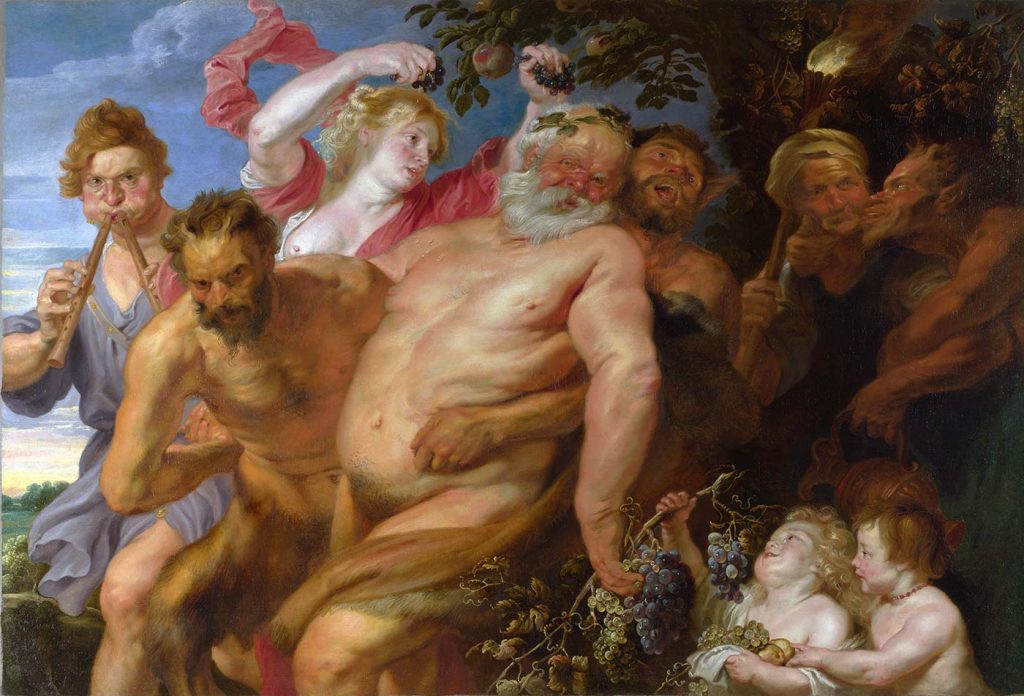
Drunken Silenus Supported by Satyrs by Anthony Van Dyck was created in 1620. The painting is in National Gallery, London. The size of the work is 133,5 x 197 cm and is made of oil on canvas.
About the Work
This uproarious crowd of mythical characters is noisy and ill-behaved, but meant to make you smile. An old man with bushy white hair and beard has lost his clothes during the revels. He’s unsteady on his feet but seems blissfully untroubled by his situation. He’s held up by two satyrs, though perhaps not for long. A young bacchant – a follower of Bacchus, the god of wine – squeezes grapes over the old man’s head, his wreath of vine leaves all askew.
Beside him, a bacchant plays the panpipes, his cheeks and nostrils flaring and his thick curls blowing in the wind. On the right, perhaps lit by the flames of a hidden bonfire, a third satyr wiggles his tongue lasciviously at an older bacchant, who, by the look of the heavy stick in her hand, doesn’t welcome his attentions. Looking on at the rumpus are two little putti who bring more grapes to add to the party. One wears a coral necklace, traditionally said to keep away the devil but seemingly having little effect.
The old man is Silenus – in Roman myth, the teacher and mentor of Bacchus. In the seventeenth century, Greek and Roman myths were popular as subjects for painting and drama, both comedic and tragic. Flemish artists in particular found Silenus a personification of everything ribald, exuberant and funny. He made an appealing subject, giving artists the chance to paint an old man, naked and drunk – comic but sometimes touched with pathos. Read more in National Gallery London
About the Artist
Sir Anthony van Dyck (22 March 1599 – 9 December 1641) was a Flemish Baroque artist who became the leading court painter in England after success in the Spanish Netherlands and Italy.
The seventh child of Frans van Dyck, a wealthy silk merchant in Antwerp, Anthony painted from an early age. He was successful as an independent painter in his late teens and became a master in the Antwerp Guild on 18 October 1617. By this time, he was working in the studio of the leading northern painter of the day, Peter Paul Rubens, who became a major influence on his work.
Van Dyck worked in London for some months in 1621, then returned to Flanders for a brief time, before travelling to Italy, where he stayed until 1627, mostly in Genoa. In the late 1620s he completed his greatly admired Iconography series of portrait etchings of mainly other artists and other famous contemporaries. Read more in Wikipedia
Order a reproduction of this work (printed on canvas)
